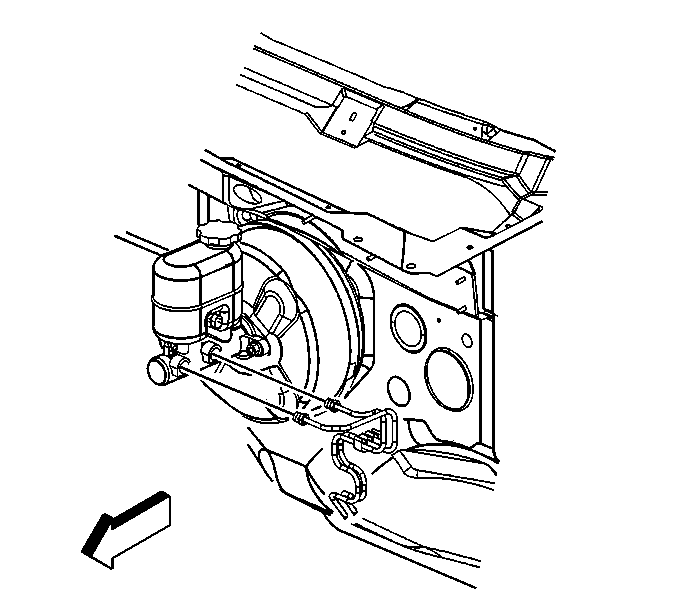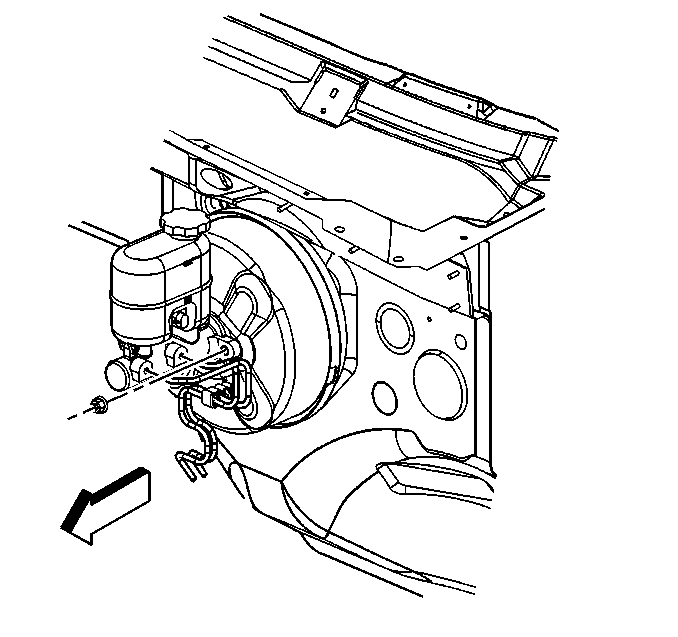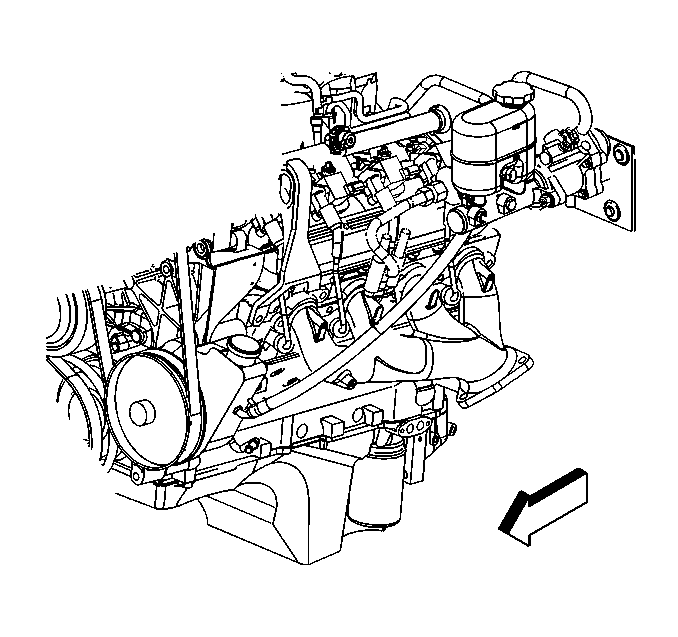Master Cylinder Replacement Vacuum Boost
Removal Procedure
- Apply the park brake and block the wheels.
- Disconnect the electrical connector from the brake fluid level sensor.
- Disconnect the brake pipes from the master cylinder.
- Plug the open brake pipe ends.
- Remove the master cylinder mounting nuts.
- Remove the master cylinder from the vehicle.
- Remove the master cylinder reservoir. Refer to Master Cylinder Reservoir Replacement .

Important: Install a rubber cap or plug to the exposed brake pipe fitting ends in order to prevent brake fluid loss and contamination.

Installation Procedure
- Install the master cylinder reservoir. Refer to Master Cylinder Reservoir Replacement .
- Bench bleed the master cylinder. Refer to Master Cylinder Bench Bleeding .
- Install the master cylinder to the vehicle.
- Install the master cylinder mounting nuts.
- Remove the rubber cap or plug from the exposed brake pipe fitting ends.
- Connect the brake pipes.
- Connect the electrical connector to the brake fluid level sensor.
- Bleed the hydraulic brake system. Refer to Hydraulic Brake System Bleeding .
- Release the park brake and unblock the wheels.

Notice: Use the correct fastener in the correct location. Replacement fasteners must be the correct part number for that application. Fasteners requiring replacement or fasteners requiring the use of thread locking compound or sealant are identified in the service procedure. Do not use paints, lubricants, or corrosion inhibitors on fasteners or fastener joint surfaces unless specified. These coatings affect fastener torque and joint clamping force and may damage the fastener. Use the correct tightening sequence and specifications when installing fasteners in order to avoid damage to parts and systems.
Tighten
Tighten the nuts to 36 N·m (27 lb ft).

Tighten
Tighten the fittings to 25 N·m (18 lb ft).
Master Cylinder Replacement Hydraulic Boost
Removal Procedure
- Apply the park brake and block the wheels.
- Disconnect the electrical connector from the brake fluid level sensor.
- Plug the open brake pipe ends.
- Remove the master cylinder mounting nuts.
- Remove the master cylinder from the vehicle.
- Remove the master cylinder reservoir. Refer to Master Cylinder Reservoir Replacement .

Important: Install a rubber cap or plug to the exposed brake pipe fitting ends in order to prevent brake fluid loss and contamination.
Installation Procedure
- Install the master cylinder reservoir. Refer to Master Cylinder Reservoir Replacement .
- Bench bleed the master cylinder. Refer to Master Cylinder Bench Bleeding .
- Install the master cylinder to the vehicle.
- Install the master cylinder mounting nuts.
- Remove the rubber cap or plug from the exposed brake pipe fitting ends.
- Connect the brake pipes.
- Connect the electrical connector to the brake fluid level sensor.
- Bleed the hydraulic brake system. Refer to Hydraulic Brake System Bleeding .
- Release the park brake and unblock the wheels.

Notice: Use the correct fastener in the correct location. Replacement fasteners must be the correct part number for that application. Fasteners requiring replacement or fasteners requiring the use of thread locking compound or sealant are identified in the service procedure. Do not use paints, lubricants, or corrosion inhibitors on fasteners or fastener joint surfaces unless specified. These coatings affect fastener torque and joint clamping force and may damage the fastener. Use the correct tightening sequence and specifications when installing fasteners in order to avoid damage to parts and systems.
Tighten
Tighten the nuts to 36 N·m (27 lb ft).
Tighten
Tighten the pipe fittings to 25 N·m (18 lb ft).
